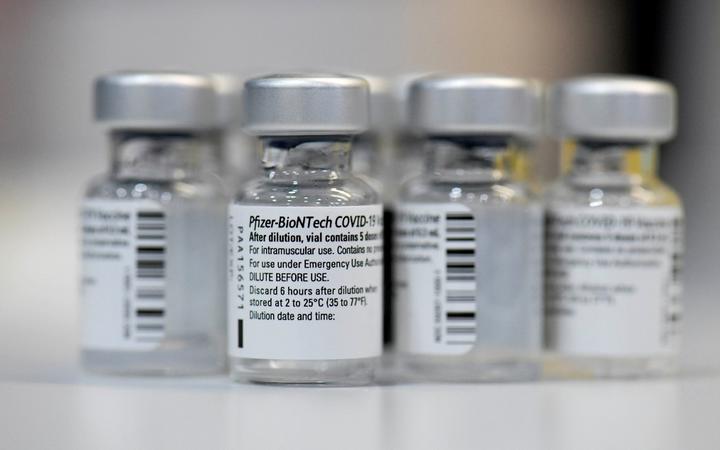The Pfizer/BioNTech vaccine explained

If you have been keeping up with the latest news regarding the COVID-19 vaccine, you will know that the first shipment of 60,000 Pfizer/BioNTech vaccines arrived 2 weeks ago and the latest shipment of an additional 76,000 doses arrived last week. By the end of March, NZ would have received a total of 450,000 doses of the vaccine and the government expects to have enough to vaccinate 225,000 New Zealanders. The majority of these will be used to vaccinate border, managed isolation & quarantine the workforce, as well as the healthcare workforce at the highest risk of exposure to COVID-19, and high-risk frontline health workers. There is no doubt that many more vaccines will be arriving in the second and third quarter of 2021.
The NZ government has secured 4 different COVID-19 vaccines. They all use different vaccine technology and have different strengths and weaknesses. One of the stand-out candidates which has gained significant media coverage is the Pfizer/BioNTech vaccine. It was put in the spotlight partly because it was the first COVID-19 vaccine granted emergency use authorisation in the US. Also, it shattered previous records for vaccine development going from the development phase to clinical trials and being granted approval for use in less than a year. I have talked about how development speed can be made possible in my previous article (you can access it here). In summary, besides the global effort and billions of dollars that were pumped into speeding the developmental process up, another reason that we can achieve so much in such a short period of time is because of a ground-breaking vaccine technology that allows the long development timeline to be shrunk significantly. This technology is called mRNA and many more vaccines will be developed in the future using this method.
Let me explain why. Traditionally, there are 4 ways to develop a vaccine. The 2 most common methods are by exposing you to either a weakened (measles vaccine) or a dead (flu vaccine) virus or bacteria so that your body can develop the necessary antibodies to fight off the pathogens if you ever come across it in the future. The third way is by introducing a toxin (tetanus shot) of a virus rather than the virus itself. The fourth type is developed by exposing a small fragment (hepatitis B vaccine) of the virus instead of the entire virus.
Some of the COVID-19 vaccines use the more traditional method such as Novavax which uses a part of the SARs_CoV2 virus known as the spike protein. When injecting the spike protein into your body, it will not result in an infection. However, it’s enough to trigger your immune system to produce antigens that can recognise and launch an assault on the virus if it ever comes across it again.
The problem with such technology is that the production and isolation of the spike protein in a lab environment takes a tremendous amount of time and resources. It requires a large amount of live virus which is practically impossible to achieve in a short timeline, especially when mass vaccination of the population is required. As mentioned in my previous article, one of the reasons the COVID-19 vaccine can be created in such a short period of time is due to overlapping different phases during the development process and initiating the manufacturing process early, before approval of use has been granted.
The scientists are also able to speed up the development timeline by focusing on a different technology for the vaccine – the mRNA method. We all heard of the phrase “give a man a fish and it’ll feed him for a day. But teach a man how to fish and it will feed him a lifetime”. This is exactly what the mRNA method is about. It is to shift some of the work that is traditionally performed in a lab to your body.
To understand this concept, we need to be aware that our body cells are like mini-factories that are constantly producing proteins for our body to function properly. Our cells do this by producing a single strand of DNA (also called mRNA). Each strand of mRNA in a way acts like an instruction manual where it holds the information on how to make one type of protein. The cell then follows the instructions provided by the mRNA and makes the protein. If our body already has the hardware to produce proteins in a more efficient manner, why not teach our body to produce spike proteins of the SARs_CoV2 virus and sequentially allow our body to develop the necessary antibodies to combat the virus?
This is how the Pfizer vaccine is being produced – by identifying the genetic sequence in a COVID-9 virus that is responsible for producing the spike protein. By identifying the specific DNA sequence, a scientist can synthesise an instruction manual (mRNA) to teach our cells to produce the harmless spike proteins, allowing our body’s immune system to recognise the threat and produce the necessary antibodies to combat it.
Doesn’t this sound like the perfect vaccine that can speed up the development and production process? Yes, it does. However, it is not without drawbacks. The problem with isolating mRNA material is that it is relatively unstable and can be broken down easily. In order to main the vaccine in a stabilised state, it needs to be encapsulated inside a fatty layer and kept in sub-zero temperature. This has created some challenges logistically because it cannot simply be transported across the globe without a super-freezer and it is relatively costly to do.
The pandemic has created an opportunity for all the brains and resources in the world to come together to use ground-breaking technology to create a vaccine in an extremely short timeframe. We are all hoping this is the key turning point in the pandemic. However, what many of us don’t realise is that the COVID-19 pandemic gave vaccine development a whole new chapter and a perfect vantage point that we needed in shaping how we prepare, manage and contain any future virus outbreaks of any kind.
To a successful vaccination rollout.



















